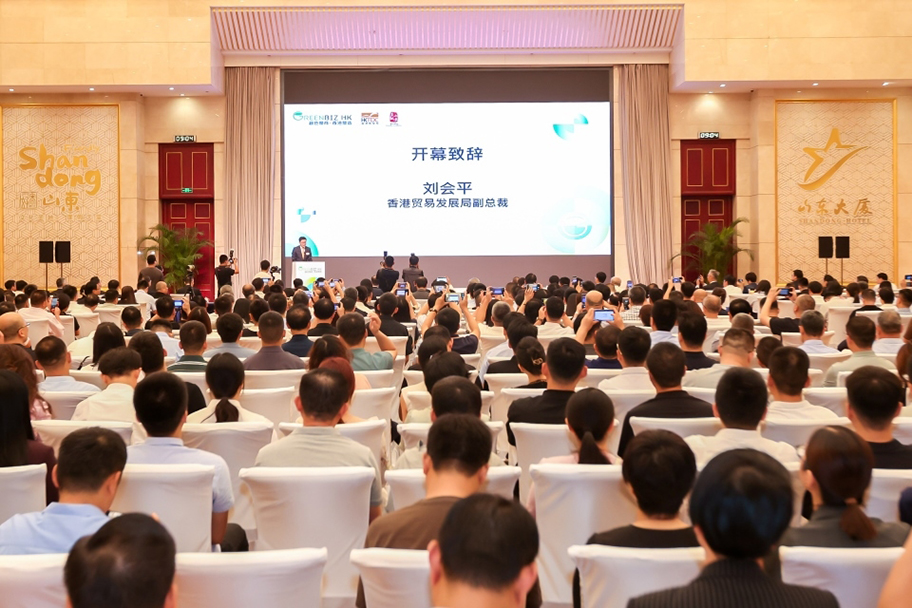Creating the Greater Bay Area of the Future
By 2022 Foundation
Many local and foreign companies are interested in the GBA and are exploring business opportunities in the region. The GBA will be a major experimental zone and a leader in reforms for China. Many things will happen first in the GBA and then will be rolled out elsewhere in China. This means companies can see aspects of China’s future in the GBA; can work on pilot projects and programs that will eventually spread to the rest of China; can seek out leading-edge Chinese partners for business inside and outside of China; can try out their own business models in the GBA first before bringing them to the rest of China; and can interact with China’s major initiatives, such as the “Belt- and Road,”, Made in China 2025, Internet Plus, Go Global, and the Digital Silk Road in the GBA. All of this argues that companies should have a strong presence in the GBA as a window into China’s future development and their opportunities within it.
The Hong Kong Trade Development Council (HKTDC) notes that the GBA is included in China’s national strategies, including in its 13th Five-Year Plan, and maintains that Hong Kong’s development will benefit from new opportunities that are created. In a May 2018 report, AmCham Hong Kong and Ipsos Business Consulting reported that 70% of 230 survey respondents were positive that operating in the GBA will increase their revenue and just over half of the respondents already have an office presence in the GBA. The top reasons given for expanding in the GBA were “access to consumer market of about 67 million people,” “to leverage benefits from the close connection between Hong Kong and the GBA,” and as a “launchpad into the rest of China / new export markets.”
The American Chamber of Commerce in South China’s 2018 survey found that Guangzhou ranked as the most popular city for investment among members followed by Shenzhen and then Shanghai and Beijing. This is the first time since the annual study commenced in 2003 that Guangzhou and Shenzhen took the top two spots. More than half of the 215 companies responding to the survey chose southern China mainly because of the potential for market growth, and most were confident that this growth would continue. Over 80% of respondents considered the business environment in southern China to be “good” or “very good.”
Interviews of business leaders by KPMG and the Australian Chamber of Commerce Hong Kong (AustCham) indicated that Hong Kong has a significant opportunity to benefit from the GBA initiative, and to participate in creating a globally competitive business region. A 2018 report by CPA Australia on a member survey with 351 responses indicated nearly half of the respondents intend to expand their business or career into the rest of the GBA in the next five years. According to business leaders interviewed by the Hong Kong Institute of Certified Public Accountants (HKICPA) in November 2017, the “GBA has the potential to be game-changing on a national level” and noted that some big accounting firms were already managing their resources from a “southern China regional perspective” with a view to better coordinating their Hong Kong and Guangdong operations.
A September 2017 KPMG and Hong Kong General Chamber of Commerce (HKGCC) report based on a survey of 614 business executives from around the GBA concluded that the GBA will be an important growth engine for the Mainland, with 90% of survey respondents indicating that the GBA is likely to have a positive impact on China’s economy, and that being part of the GBA will be good for Hong Kong. In 2018, KPMG, the HKGCC, and HSBC published results of a similar survey. Seventy-seven percent of the more than 700 respondents expect the GBA’s economic growth to exceed that of the rest of China over the next three years and 57% said that their company has a strategic plan for the GBA.
Identifying the Opportunities
There are five main sources of GBA-related opportunities for Hong Kong, Hong Kong people, and Hong Kong companies. These are opportunities that stem from the economic size and growth of the region driven by underlying economics and policy, from greater connectivity in the GBA, from further economic opening to Hong Kong companies, from people-centric policies and developments in the GBA, and from Hong Kong’s distinctive position through “One Country-Two Systems.”
Opportunities from Economic Size and Growth
The GBA has a population of approximately 70 million people and a GDP in excess of USD 1.5 trillion. If the population and economic projections made for the region hold, that will become at least 80 million people and USD 3.5 trillion in GDP by the early 2030s. By that time, the GBA’s GDP should be larger than all but four countries. Such a change not only would result in a larger market, it would result in a completely different market.
The consumer market will change dramatically with increasing affluence and the development of a more permanent population. The result will be a broadening and upscaling of the consumer goods market, the emergence of a medium and high-end consumer services market, and the emergence of a much larger market for public services and amenities.
The industrial market will also be transformed as GBA companies vertically integrate to add more value, source more of their inputs and equipment from within the region, and become more sophisticated in their use of producer services. The result will be a diversified regional economy, including light, medium, and heavy industry; high, medium, and low-tech industries; producer, consumer, and public services; final assembly, components, inputs, machinery, equipment, and supporting services; and so on.
Economic growth will not just take place in the existing core cities of the GBA (Hong Kong, Macao, Guangzhou, and Shenzhen), rather GBA development is rapidly spreading to what were once more peripheral cities in the region, which are becoming increasingly attractive as markets and production locations.
In addition to natural economic evolution, specific sectors will receive substantial support from Central, Provincial, and Municipal Governments in Guangdong. The Outline Development Plan calls for the specific targeting of dozens of sectors, including numerous high-tech industries, advanced manufacturing industries, business service sectors, education and medical services, logistics, leisure industries, and others. If the implementation is similar as for other Mainland documents of this type, that will mean streamlined approvals, land and infrastructure provision, R&D funding, education and training funding, preferential financing, and other government policies to support these industries. Many Hong Kong companies operating in the PRD cities of the GBA in these industries will be eligible for several types of support in the PRD. The Plan specifically calls for support of Hong Kong as an international maritime center, a business and professional service center, a financial center, a trade center, an aviation hub, a logistics and transport center, a legal and dispute resolution center, a commercialization center for regional innovation, and an IP trading center. All of these represent opportunities for Hong Kong.
Opportunities from Greater Connectivity
The opening of the Hong Kong-Zhuhai-Macao Bridge, the XRL, the new Liantang/Heung Yuen Wai Boundary Control Point, additional crossings across the Pearl River, and improved transportation within Guangdong is a game changer for Hong Kong. Better connectivity gives Hong Kong service providers the ability to reach much wider markets. Better connectivity gives Hong Kong manufacturing and trading companies much more choice in setting up supply chains in the region as well as a much better ability to sell into the GBA. Hong Kong companies, particularly SMEs, can also manage a much wider set of corporate activities, such as headquarters, R&D, marketing and sales, production, after sales service, and logistics across a much broader area than previously.
Better connectivity provides Hong Kong people with a much greater opportunity to either live in Hong Kong and work or study in Guangdong or live in Guangdong and work or study in Hong Kong. Better connectivity also opens up the entire GBA’s cultural and leisure resources to Hong Kong people to an unprecedented extent. It is now possible to wake up in Hong Kong, have breakfast in Shenzhen, lunch in Guangzhou, dinner in Zhuhai, catch a show in Macao, and return to Hong Kong all in one day. It is only a matter of time before Hong Kong people, particularly Hong Kong young people, are taking advantage of these resources.
The Plan calls for the completion of infrastructure projects already committed, such as the ShenzhenZhongshan Bridge, the Shenzhen-Maoming Railway, links to the Pan-Pearl River Delta provinces, and numerous projects inside the region. One goal is to reduce the travel time between any two major cities in the GBA to one hour or less. Once this achieved, these cities will be essentially integrated from a transport, logistics, and economic standpoint. The Plan also calls for significant streamlining of boundary crossing rules and practices to enhance intraregional flows. Specific mention is made of further improving connectivity to Hong Kong and streamlining Hong Kong-Mainland travel and boundary crossing.
Opportunities from Further Economic Opening
Hong Kong companies and people have already benefitted greatly from economic opening due to CEPA, the Guangdong Free Trade Zone, and numerous demonstration zones for Guangdong-Hong Kong-Macao service sector cooperation. The Plan commits to substantial additional opening that will benefit Hong Kong companies. It calls for the nine PRD municipalities to develop systems and regulations in line with advanced international practice for investment and trade. It calls for deepening the implementation of liberalization for the service sectors of Hong Kong and Macao under the respective CEPAs. It calls for cooperation between the Mainland, Hong Kong, and Macao in developing a wide range of professional services, cooperation that should result in additional opportunities for Hong Kong professionals. It calls for a strengthening of cooperation on dispute resolution, greater investment facilitation, greater trade liberalization (particularly for Hong Kong and Macao companies), expanding the scope of mutual recognition of professional qualifications, and facilitation of crossboundary practice in the GBA. It also encourages Hong Kong entities to set up research, development, and other innovation-related activities on the Mainland; opening of Mainland-funded research projects and activities to be open to Hong Kong entities and individuals; and the use of Hong Kong as a place to commercialize and internationalize developments in the GBA.
The Plan also provides specific roadmaps for further opening and reform in Qianhai, Nansha, Hengqin, and other cooperation or development zones. For Qianhai, the Plan calls for more extensive links with Hong Kong in high-end services, cooperation between the Qianhai Mercantile Exchange and Hong Kong Exchanges and Clearing Limited in commodities trading, developing platforms for trade cooperation and globalization, enhancing cooperation with Hong Kong in legal matters (including dispute resolution for the Belt and Road Initiative and IP protection). Nansha is to cooperate with Hong Kong and Macao in innovative development, financial services, and logistics. In Hengqin, the Plan calls for much more extensive cooperation with Macao, but also greater opening to Hong Kong. It supports several specific examples of cooperation with Hong Kong with Shenzhen, Dongguan, Foshan, Jiangmen, and others, and calls for support for each of the nine PRD cities to set up cooperation zones with Hong Kong and Macao, an initiative that could dramatically expand Hong Kong’s opportunities in several of the PRD cities.
Greater opening to Hong Kong and Macao companies and individuals is also specifically identified by the Plan in investment, trade, a wide range of financial services, transport, logistics, education, healthcare, accounting, legal services, arbitration, social services, cultural and creative industries, management consultancy, testing and certification, construction and engineering, and tourism. All of these represent significant opportunities for Hong Kong, Hong Kong people, and Hong Kong companies.
Opportunities from People-centric Policies and Developments in the GBA
Opportunities for Hong Kong can also be found in the people-centric policies and developments in the GBA, many of which are reflected in the Plan. The governments in the GBA have been working together on environmental issues for more than a decade. The Plan calls for the implementation of major conservation, restoration, and remediation projects in the region. It calls for more stringent implementation of environmental regulations; an increased focus on environmental protection; active programs to reduce air, land, and water pollution; and promotion of a clean, green, low-carbon environment.
The Plan also promotes progress and cooperation in education, culture, tourism, and social security to develop a quality living circle for living, working, and traveling. In education, the Plan calls for support for joint operations of institutions by Guangdong, Hong Kong, and Macao entities; encourage educational exchanges and mutual recognition of academic credits; bringing world-class universities into the region; encouraging and facilitating Hong Kong and Macao students to study in Guangdong; cooperate in vocational education; and encourage cooperation and exchanges for primary and secondary schools. The Plan calls for the development of a talent pool in the PRD drawing on Hong Kong Macao experience.
In culture, the Plan calls for cross-boundary programs to protect cultural heritage sites, organize cultural heritage exhibitions and performances, and support promotion of Lingnan culture. It also calls for joint promotion of cultural development, and specific programs related to the Hong Kong Palace Museum, the Xiqu Centre in the West Kowloon Cultural District, and Hong Kong-based creative talents and events, like the Hong Kong International Film & TV Market, the Hong Kong Book Fair, and the Business of Design Week. In tourism, the Plan calls for support for Hong Kong as an international tourism hub, and a cruise terminal center, as well as including Hong Kong in multi-destination tourism efforts and promotion.
In employment and entrepreneurship, the Plan specifically calls for efforts to make it easier for Hong Kong and Macao residents (particularly young people) to live and work in the Mainland. Experimental zones for employment and entrepreneurship for Hong Kong and Macao people are to be established in Qianhai, Nansha, and Hengqin. Local subsidies and support in the Mainland will be extended to qualifying Hong Kong entrepreneurs and SMEs and several Hong Kong and Macao youth innovation and entrepreneurship support programs are described. Since the release of the Plan, it has also been announced that Hong Kong people can be eligible for favorable tax treatment should they choose to work in the Mainland.
In the health area, the Plan calls for increased ability of Hong Kong and Macao healthcare providers to set up in the PRD, and for further cooperation with Hong Kong and Macao centers for Chinese medicine. It also encourages Hong Kong and Macao professionals to visit the PRD on academic exchanges and short-term private practice, and for cross-boundary consultation and referrals to be enhanced. The Plan also calls for exploring allowing Hong Kong and Macao resident working and living in Guangdong to the same treatment as Mainlanders for education, medical services, elder care, housing, and transport. If enacted, this would significantly reduce one of the issues that prevents Hong Kong people from living and working in the PRD. Hong Kong and Macao investors are also encouraged to establish social service institutions, such as elder care.
The result of all of these initiatives will be to improve the living environment in the GBA and to significantly increase the access of Hong Kong people to services and opportunities in the PRD.
Opportunities from “One Country-Two Systems”
The Central and local governments involved in the GBA are committed to the “One Country-Two Systems” arrangement, which includes separate membership of the People’s Republic of China, Hong Kong, and Macao in the WTO. These arrangements have been cited repeatedly by senior Chinese officials as key advantages for the region that provide substantial benefits to China as a whole. The Plan continues this policy:
To adhere to “one country, two systems” and act in accordance with the law. To integrate the adherence to the “one country” principle and the respect for the differences of the “two systems”, stay committed to the basis of “one country”, and leverage the benefits of “two systems”. To integrate the upholding of the Central Government’s overall jurisdiction and the safeguarding of a high degree of autonomy in the special administrative regions, respect the rule of law, and act strictly in accordance with the Constitution and the Basic Laws. To integrate the needs of the country with the strengths of Hong Kong and Macao, fully leverage the market-driven mechanism, foster complementarity among Guangdong, Hong Kong and Macao, and achieve joint development.
In fact, the Plan calls for taking “One Country-Two Systems” farther. Hong Kong is called a “core city” of the GBA which should be strengthened in its own right and through linkages with the rest of the region. Much of the Plan discusses streamlining the interaction between Guangdong (or the Mainland), Hong Kong, and Macao further through infrastructure, cooperation, and additional opening. Most of the additional opening is to provide Hong Kong and Macao companies and people with greater access to the Mainland, including in trade, investment, services, R&D programs, access for work, access to social services, and business support programs. At the same time, Hong Kong’s positioning as a market-oriented and open economy, with rule of law, advanced business environment, international linkages, strong capabilities, and a distinct system are also retained and emphasized. Many of the special aspects of Hong Kong and its economy are highlighted and its complementary nature with respect to Guangdong and the Mainland highlighted.
The net result of the provisions of the Plan is to reaffirm the commitment to “One Country-Two Systems,” while supporting Hong Kong to extend its present roles, take on new roles, and extend its cooperation with the rest of the region. Hong Kong’s major business sectors are acknowledged and supported, connectivity between Hong Kong and the rest of the region is streamlined, and substantial new opportunities for Hong Kong companies and Hong Kong people in the Mainland are described. The thrust is one in which Hong Kong will have additional new opportunities related to “One CountryTwo Systems” going forward.
GBA Opportunities for Hong Kong in Perspective
The opportunities for Hong Kong, Hong Kong people, and Hong Kong companies in the GBA are clearly enormous.
The combination of the GBA’s economic size and growth, Mainland support policies, increased economic opening, better connectivity, more comprehensive people-centric policies , and Hong Kong’s position under “One Country-Two Systems” provides opportunities for Hong Kong business to expand its traditional roles (in management, professional services, financial services, trade, logistics, and international marketing and sales) and develop new roles (as a clearing house for international idea flows, data and information flows, and new types of financial services). The same combination will allow Hong Kong to perform these traditional and new roles for traditional industries (assembly manufacturing, business and financial services, trade and logistics, etc.) as well as for new industries (including AI, big data analysis, new types of health services, the high-tech industries of the PRD, and the new heavy industries and services sectors in the PRD). The same combination will also allow Hong Kong to perform these traditional and new roles for traditional geographies (Hong Kong, Macao, Shenzhen, Dongguan, Guangzhou, and Foshan) as well as for new geographies (Zhuhai, Huizhou, Zhongshan, Jiangmen, and Zhaoqing). In fact, the largest economic opportunity for Hong Kong today is extending its roles, industry coverage, and geographic coverage in the GBA.
For Hong Kong people, the combination of the GBA’s economic size and growth, Mainland support policies, increased economic opening, better connectivity, and more comprehensive people-centric policies should provide opportunities to improve their employment and livelihood potential, their physical environment, their working and living options, their cultural and leisure opportunities, and enhance their overall well-being.
Further involvement in the GBA by Hong Kong people is a matter of choice. There are opportunities for those who wish to pursue them, but no requirement to pursue them for those who choose not to. However, the GBA initiative literally opens new horizons for many Hong Kong people and for the first time provides a realistic possibility of Hong Kong and Hong Kong people having a real “domestic market” and “hinterland” behind them and not being as limited by space constraints, congestion, high costs, and the business and employment opportunities of a small and specialized economy. Hong Kong’s future is linked to that of the GBA and in many ways, the level of interaction that could make the GBA one of the world’s “super regions” has just begun.
Please click to read full report.




